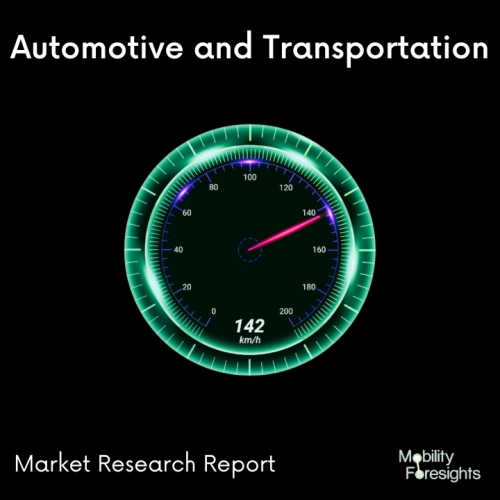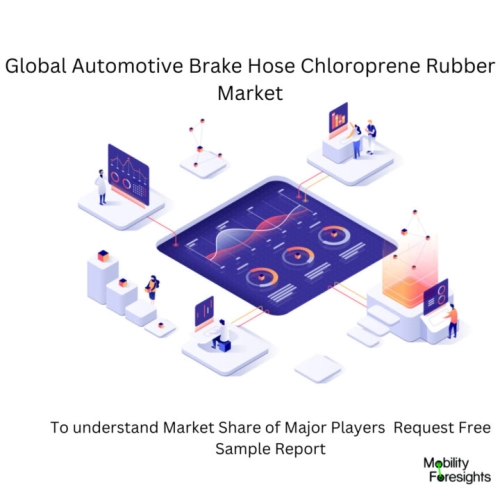
- Get in Touch with Us

Last Updated: Apr 25, 2025 | Study Period: 2023-2030
Neoprene, a synthetic rubber, is produced using the chemical chloroprene. Numerous consumer products, such as footwear, gloves, athletic equipment, bags, bandages, and fabrics, employ neoprene.
The inner core of stock brake hoses is composed of synthetic rubber, which is enclosed in one or more layers of fabric mesh reinforcement before being covered in yet another layer of rubber.
A couple of examples of synthetic rubber materials are neoprene and chloroprene. Chloroprene is used to create the polymer neoprene. The main distinction between neoprene and chloroprene is that the former is a polymer while the latter serves as the raw material for making neoprene.
Polychloroprene, a class of polymerized rubbers, is commonly referred to as neoprene. Wetsuits and other equipment intended to provide insulation against cold and damp situations are perfect applications for neoprene's full waterproof properties.
In applications needing strong resistance to oils, chemicals, hydrocarbons, and solvents, neoprene is superior to EPDM in terms of properties. The advantages of EPDM over Neoprene, on the other hand, are greater in applications needing strong resistance to UV light, ozone, and external weathering.
Oil-resistant NBR tubes, occasionally blended with PVC or polyvinyl chloride, are typically used in automotive gasoline hoses.
Similar to airbrake hoses, reinforcement is frequently constructed of polyester, polyamide, or rayon textile yarn. When a cover is applied to a fuel hose, it is frequently composed of material that is resistant to oil, such as CR or CSM.

The Global Automotive brake hose chloroprene rubber market accounted for $XX Billion in 2022 and is anticipated to reach $XX Billion by 2030, registering a CAGR of XX% from 2023 to 2030.
WABCO INDIA LIMITEDA brake hose with a tubular inner layer and an outer layer that has exceptional interlaminar bonding strength and is mass produced at a low price.
The vacuum brake hose is made up of a tubular inner layer made of acrylonitrile-butadiene rubber, an outer layer made of chloroprene rubber that is formed on the outer peripheral surface of the reinforcing fibre layer, a reinforcing fibre layer that is impregnated with an adhesive made primarily of components, and interlaminar bonding between the tubular inner layer and the outer layer.
An ultralow expansion brake hose for directing a fluid flow, the hose having a central passage that at least partially directs the associated fluid flow and extending radially outwardly from said central passage to an outer surface, the hose being made up only of an inner tube layer, a reinforced layer, a braided layer, and an outer jacket layer, the inner tube layer having a radially inwardly facing surface coaxial with a passage axis and a radially out The braided layer is made up of a single layer of braided fibres, and the outer jacket encloses it and has the outer surface.
The first fibre layer is wrapped in a first direction about the axis, and the second fibre layer is wrapped in a second direction about the axis, which is the opposite of the first direction.
| Sl no | Topic |
| 1 | Market Segmentation |
| 2 | Scope of the report |
| 3 | Abbreviations |
| 4 | Research Methodology |
| 5 | Executive Summary |
| 6 | Introduction |
| 7 | Insights from Industry stakeholders |
| 8 | Cost breakdown of Product by sub-components and average profit margin |
| 9 | Disruptive innovation in the Industry |
| 10 | Technology trends in the Industry |
| 11 | Consumer trends in the industry |
| 12 | Recent Production Milestones |
| 13 | Component Manufacturing in US, EU and China |
| 14 | COVID-19 impact on overall market |
| 15 | COVID-19 impact on Production of components |
| 16 | COVID-19 impact on Point of sale |
| 17 | Market Segmentation, Dynamics and Forecast by Geography, 2023-2030 |
| 18 | Market Segmentation, Dynamics and Forecast by Product Type, 2023-2030 |
| 19 | Market Segmentation, Dynamics and Forecast by Application, 2023-2030 |
| 20 | Market Segmentation, Dynamics and Forecast by End use, 2023-2030 |
| 21 | Product installation rate by OEM, 2023 |
| 22 | Incline/Decline in Average B-2-B selling price in past 5 years |
| 23 | Competition from substitute products |
| 24 | Gross margin and average profitability of suppliers |
| 25 | New product development in past 12 months |
| 26 | M&A in past 12 months |
| 27 | Growth strategy of leading players |
| 28 | Market share of vendors, 2023 |
| 29 | Company Profiles |
| 30 | Unmet needs and opportunity for new suppliers |
| 31 | Conclusion |
| 32 | Appendix |